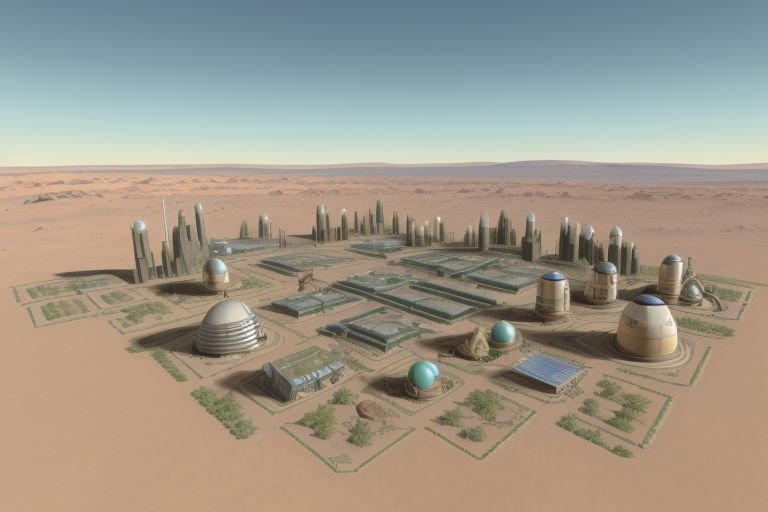The ambition to establish a self-sustaining city on Mars by 2030 is a reflection of humanity’s ever-growing aspirations in space exploration and colonization. This monumental task involves overcoming numerous challenges, ranging from technological to physiological, and requires the collaboration of international space agencies, private companies, and scientific communities. The primary goals for achieving such an ambitious project include developing reliable life support systems, sustainable habitats, and efficient transportation methods.
1. Life Support Systems: Essential for the survival of the colonists, life support systems must efficiently recycle air, water, and waste. Advances in closed-loop ecological systems, which mimic Earth’s natural biospheric processes, are critical. These systems will need to be nearly 100% efficient to ensure the colony’s long-term sustainability without constant resupply from Earth.
2. Sustainable Habitats: Building habitats that can shield inhabitants from Mars’ harsh environment (including extreme temperatures, radiation, and dust storms) is paramount. Utilizing in-situ resource utilization (ISRU) techniques to construct habitats from Martian materials can significantly reduce the need to transport construction materials from Earth. 3D printing technologies, using regolith (Martian soil), are already being tested for this purpose.
3. Agricultural Systems: To support a self-sustaining city, food production systems that can operate in the Martian environment are necessary. This includes developing hydroponic and aeroponic systems that can grow food efficiently within controlled environments, thereby reducing the colony’s dependency on Earth-supplied foodstuffs.
4. Energy Production: The colony will require a reliable and sustainable energy source. Solar power is a leading candidate due to Mars’ surface receiving ample sunlight. However, the intermittency caused by dust storms necessitates the development of backup energy storage systems or alternative energy sources such as nuclear power.
5. Transportation: Efficient transportation systems for moving people and materials between Earth and Mars, as well as within the Martian surface, are crucial. Reusable rocket technologies, such as those developed by SpaceX with its Starship vehicle, are key to reducing the costs of space travel. Additionally, developing intra-Mars transportation systems, possibly leveraging ISRU for fuel production, is necessary for the colony’s expansion and resourcing.
6. Health and Psychology: Addressing the physical and psychological health of colonists is essential for the success of a self-sustaining city. This includes medical care for space-related health issues, such as bone density loss and radiation exposure, and support for the psychological well-being of residents in a remote and isolated environment.
7. Governance and Social Structure: Establishing a governance framework that supports the well-being and productivity of the colony is also vital. This includes creating a legal and social structure that encourages cooperation, innovation, and sustainable living practices.
Realizing a self-sustaining city on Mars by 2030 is an ambitious goal that pushes the boundaries of current technological and social capabilities. While significant progress has been made in space travel and habitation technologies, the success of such a project will ultimately depend on global cooperation and the willingness to invest in long-term research and development.


